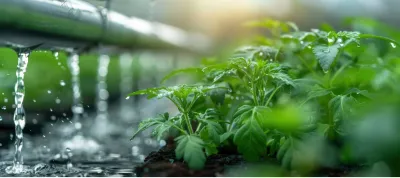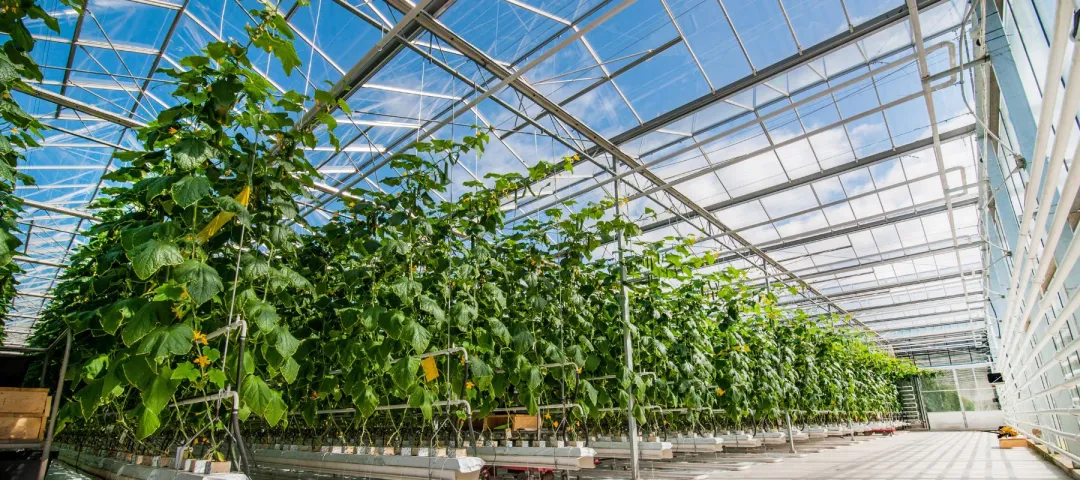General information
RDP Priority
- P2. Competitiveness
RDP Focus Area
- 2A: Farm’s performance, restructuring & modernisation
RDP Measure
- M04: Investments in physical assets
Beneficiary type
- Farmer / land manager
Summary
Horticulture plays an important role in European agriculture, providing a diverse range of fruits, vegetables, and ornamental plants. Implementing advanced cooling systems, thermal blankets and precision irrigation can significantly improve the profitability of horticultural greenhouses by optimising water and energy efficiency while enhancing crop yields. This Greek project involved the modernisation of three existing greenhouses to improve the economic efficiency of a farm’s horticultural holding.
CAP-funded project actions focused on the purchase and installation of an advanced cooling system, thermal curtains, self-propelled seedling irrigation bar, a semi-automatic paper pot-making machine, and soil peat mixer. A 60KW solar power station was constructed to meet the energy needs of the farm for the operation of fans and pumps. With these improvements, the project succeeded in increasing the yield and efficiency of crop production, ensuring better product quality, resource savings, and environmental protection.
Results
The new cooling system and self-propelled irrigation bar system enabled better control of climate conditions and water and energy savings. The installation of thermal curtains improved the efficiency of heating and cooling. Also, the photovoltaic station reduces the energy cost of the seedling nursery. With these improvements, the horticultural farm has been able to increase the quality of its products and reduce production costs, contributing positively to the local economy and the environment.
Specific benefits include:
- 30% increase in revenue from upgrading the greenhouses to increase productivity and plant quality;
- 30% energy savings from new cooling and thermal curtain systems that reduce the need for excessive heating and cooling;
- improved production has created new jobs in the local community, which reinforces the rural economy's resilience;
- the energy autonomy offered by the photovoltaic station makes the project 100% energy-autonomous.

Funding
Total budget 359 710 (EUR)
RDP support: 143 884 (EUR)
Private/own: 215 826 (EUR)
Keywords
Ressourcen
Documents
Context
Horticulture plays a vital role in European agriculture, contributing significantly to both economic stability and biodiversity. It enhances food security by providing a diverse range of fruits, vegetables, and ornamental plants. Furthermore, horticultural practices can promote sustainable farming methods, supporting environmental health while fostering rural development across the EU.
Greenhouses are key in modern horticulture, providing controlled environments that enhance plant growth. However, maintaining optimal temperatures within these structures can be challenging and costly. Implementing advanced cooling systems, thermal blankets and precision irrigation can significantly improve the profitability of greenhouses by optimising water and energy efficiency while enhancing crop yields.
Cooling systems regulate internal temperatures during hot weather, reducing heat stress on plants and minimising water loss through evaporation. Thermal blankets serve to insulate greenhouses during colder months, retaining heat generated from sunlight while reducing reliance on external heating sources. This dual approach not only lowers energy consumption but can also extend the growing season for temperature-sensitive crops. Consequently, growers can capitalise on market demands by producing out-of-season crops.
Precision irrigation techniques, such as drip irrigation or automated scheduling based on moisture sensors, ensure that crops receive adequate hydration without waste. This approach not only conserves water resources but also promotes healthier plants that are more resilient and productive.
The project beneficiary is a specialist greenhouse company in Greece, cultivating flowers and ornamental plants throughout the year. Their main commercial activity concerns the cultivation of a mother plantation and rose cuttings, which are then sold to nurseries.
Objectives
Opportunities were identified to improve performance and reduce operating costs from better growing conditions, which could protect the environment by modernising equipment in the greenhouses. This would be achieved by:
- increasing product productivity and quality through the installation of advanced cooling and irrigation systems;
- reducing operating costs and saving resources such as water and energy;
- strengthening the local economy by creating new jobs and supporting sustainable development;
- mitigating emissions by improving energy efficiency.
Activities
Project preparation and planning from 2017 to 2018 provided needs analysis, equipment design and technology selection.
Phased project implementation from 2018 to 2024 involved introducing:
- self-propelled seedling irrigation bar system to provide precision standardising plant growth, while also saving water and fertilisers;
- paper pot production machine to increase efficiency and replace plastic pots. It can produce up to 9 000 pots per hour;
- cooling system in 565 m2, 10-01-2020;
- cooling system in 221 m2, 08-05-2020;
- cooling system in 170 m2, 03-07-2020;
- cooling system in 1 593 m2, 11-09-2020;
- cooling system in 218 m2, 22-01-2021;
- cooling system in 660 m2, 25-06-2021;
- cooling system in 2 450 m2, 31-08-2021;
- photovoltaic power station 60KW, 30-11-2021;
- cooling system in 2 500 m2, 3-12-2021;
- thermal curtain system in a greenhouse of 2 550 m2, 15-02-2022;
- thermal curtain system in a greenhouse of 2 500 m2, 15-11-2022;
- peat-soil mixer with 1 000 litre bucket for easy transport and use, 14-03-2023;
- air/water heat pumps, 27-04-2023.
The new cooling system and the self-propelled irrigation bar system have enabled better control of climate conditions and water and energy savings. The installation of thermal curtains has improved the efficiency of heating and cooling. The photovoltaic station also reduces the energy cost of the nursery. With these improvements, the horticultural farm has been able to increase the quality of its products and reduce production costs, contributing positively to the local economy and the environment.
Specific benefits include:
- the upgrading of greenhouses has led to an increase in productivity and plant quality, offering economic benefits with an increase in revenues of 30%;
- improved production has created new jobs in the local community, strengthening the local economy and promoting economic growth;
- the new cooling and thermal curtain systems reduced the need for excessive heating and cooling, saving energy and reducing the carbon footprint by 30%;
- energy autonomy offered by the photovoltaic station makes the project 100% energy-autonomous;
- automated irrigation ensures rational use of water, protecting water resources and reducing waste. These actions have helped to protect the environment and promote sustainable farming practices;
- automation of irrigation and other processes also allowed workers to focus on more specialised and less tedious tasks;
- social benefits of the project include improving working conditions for greenhouse workers, as well as providing consumers with better quality and more affordable agricultural products;
- increased consumer and local market confidence in the beneficiary’s products, promoting the maintenance of agricultural activity and sustainability.
Key lessons
Integrating cooling systems, thermal blankets, and irrigation in horticultural greenhouses presents useful lessons for enhancing profitability, including:
- efficient cooling systems mitigate heat stress on plants, ensuring optimal growth conditions. This can improve yields and the quality of produce, directly impacting profit margins;
- thermal blankets optimise temperature regulation, reducing energy costs associated with heating and cooling. By maintaining a stable microclimate within the greenhouse, these blankets enhance plant resilience and reduce losses due to extreme weather conditions;
- advanced irrigation techniques promote water efficiency and minimise waste. This not only lowers operational costs but also supports sustainable practices that appeal to environmentally conscious consumers.
"With the installation of the new systems, we can monitor and control the crop more efficiently. The water and energy savings are remarkable. This project is an excellent example of how technology can improve efficiency and sustainability in agricultural production."
Tsiakas Ioannis

